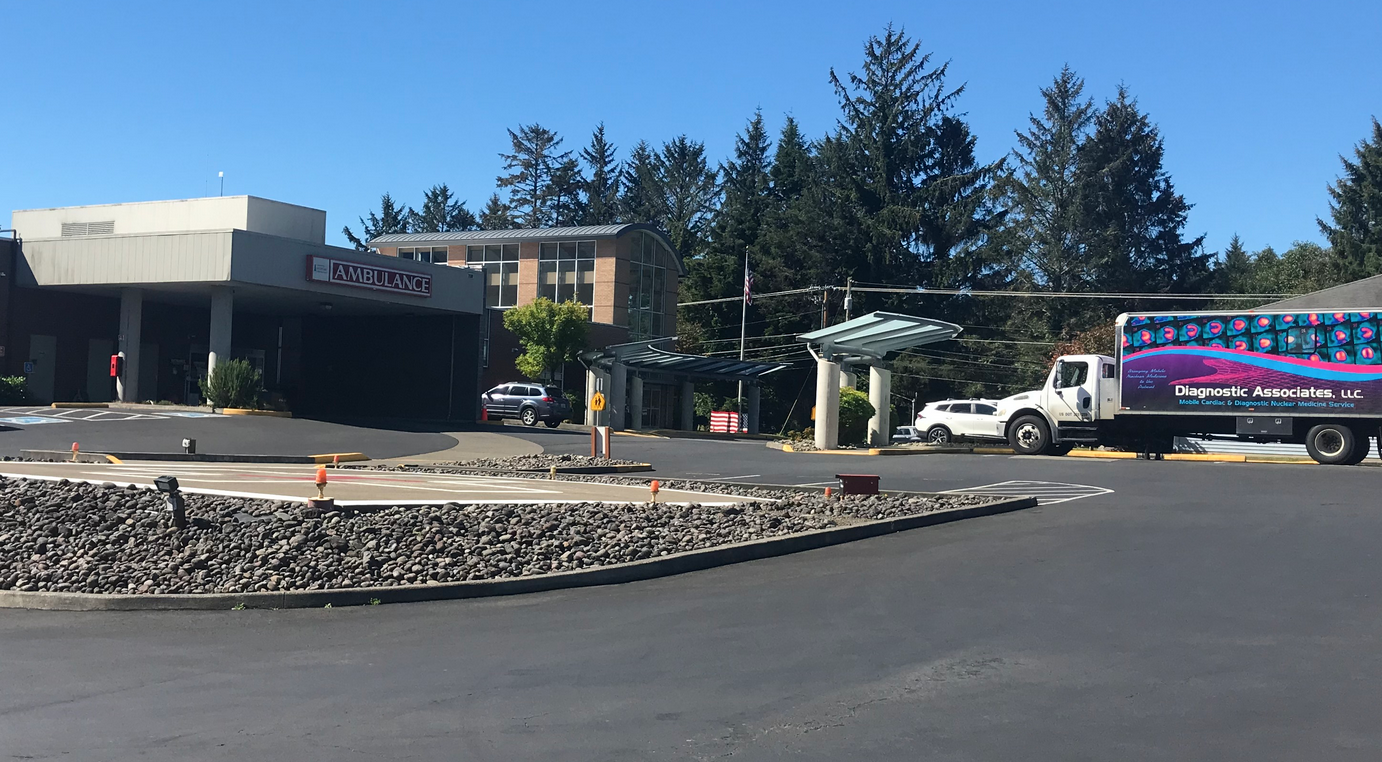Editor’s Notebook: The best columnists help shape our reality
Published 4:52 pm Tuesday, November 12, 2019

- Tom Hallman, The Oregonian's Pulitzer Prize-winning feature writer, will speak at Columbia Forum next week. Hallman has a long connection with the Long Beach Peninsula.
For dinner reservations, to become a member or be added to the contact list:
Call: 503-325-4955
Trending
Email: forum@dailyastorian.com
RSVP: By noon Monday, Nov. 18
E-ticketing: https://www.eventbrite.com/e/columbia-forum-tom-hallman-jr-tickets-80305663401
(Reservations are not required if you want to attend the talk but not have dinner. Arrive at about 6:45 p.m. for the 7 p.m. program.)
Great newspaper columns are portraits in miniature, 800-word windows opening onto lives, places, ideas, tales. A column — one person’s impression of something of wider interest — in the right hands can become a blend of poem and documentary, of biography and distilled essence of memory. At their very best, they accurately capture a subject and help make it part of how readers perceive reality.
We’ve long since crossed a boundary into a time when anybody can be a columnist. Free blogs are universally familiar to anyone with an internet connection, with subscribers numbering from none to many thousands. A few of these are outstanding. But there’s still much to be said for professional columns written for well-established publications. As with the news itself, you get what you pay for.
Tom Hallman, The Oregonian columnist speaking at Columbia Forum next Tuesday, is easily among today’s most accomplished practitioners of column and feature writing. Guided by curiosity and compassion for the human condition, a Hallman column is the heart of Oregon and the Northwest, and yet can be read with fulfillment by a person on the other side of the planet. Each is about a unique life or situation, but lights a path toward more fully living our own lives.
Hallman is best known for a series written in 2000 about Portlander Sam Lightner and his family, whose quiet endurance inspires confidence that love and dignity are attainable in any circumstance. The series, “The Boy Behind the Mask,” won one of American journalism’s highest honors, a Pulitzer Prize for Feature Writing. Full of perfectly observed details, it places a reader beside a facially deformed 14-year-old boy as he walks toward school with a nice girl he has a secret crush on.
“Two blocks from Grant, kids jam the streets. The wavy-haired girl subtly, discreetly, falls behind. When the boy slows to match her step, she hurries ahead. Sam lets her go and walks alone.”
Heartbreaking. But also heart expanding.
Read the series online at https://tinyurl.com/Hallman-boy-column.
Newspaper people are prone to overestimating our influence, but in Hallman’s case it’s genuinely plausible to think that in the course of his career he’s played a considerable part in shaping and reinforcing Portland’s ideas about itself. If a city can truly be said to have a personality, Portland’s and Hallman’s are much alike. What city wouldn’t like to be known for caring about one another and helping everyone reach their potential?
Making connections
Without necessarily being aware of it, we all hunger for connections with others. Columns that focus on what we in the business call “human interest” help build those connections by providing insights into the lives of neighbors. In a sense, we get to know them, hear their stories, and learn about how they resemble and differ from us. Nowadays, thanks to social media, we can chat online with thousands of others about what we’ve learned about these fellow “interesting humans.”
In my parents’ and grandparents’ days, clipping out columns to share was routine, and I still come across them among envelopes jammed with old letters, canceled checks and other detritus of these past generations. In the mid-20th century, living in the Rocky Mountains, inevitably their favorite columnist was Robert “Red” Fenwick, The Denver Post’s most popular and enduring writer of modern Western lore under the title “Ridin’ the Range.”
In a remembrance published a couple years ago, The Post said of Fenwick, “He possessed a hearty laugh and a love for Old Yellowstone whiskey, both of which he used often. For many living in what editor/publisher Palmer Hoyt imperiously declared the “Rocky Mountain Empire” — The Denver Post’s 13-state circulation area ranging from Montana to New Mexico — Red Fenwick was The Post: as a reporter, columnist and general emissary. He roamed the West, talking to ranchers, farmers, housewives in Kansas, American Indians in New Mexico and just plain folks.”
In a column looking back at his time as a Civilian Conservation Corps foreman in 1933, Fenwick commemorated his crew:
“It was the sorriest assemblage of humans since Indian treaty days. All needed a shower and shave. They looked as though they had walked past an army surplus supply depot after an explosion and had grabbed whatever items of clothing they fancied.” On the job in Yellowstone, Fenwick remembered a young worker excitedly telling his companions, “‘Hey youse guys! Lookit dat t’ing squoiting outa d’ground. It’s a geezer! Dat’s wot it is — a ‘geezer.’”
One of Red’s expense accounts included this item: “One bottle of booze for Wyoming politician, $5.”
Now fighting to maintain something of its former glory, The Post could sure use another Fenwick, a rounder-up of real stories of the modern West, capable of making everyone feel part of a larger enterprise and a participant in ongoing human adventure. His 1982 obituary described him as “a friend of children, cowboys, Indians, rodeo, the U.S. flag, hot-wire linemen, horses, dogs, yucca and everything American.” A man couldn’t hope for a better epitaph.
My columnists
The first columnist I ever personally paid much attention to was my uncle, Tom Bell, whose High Country column and newspaper, High Country News, served the cause of preserving the West with evangelical fervor. Tom rightly perceived Western treasures as being constantly under threat by corporate interests and bought-and-paid-for politicians. Just a couple days ago, I came across a 1964 column of his that my grandmother clipped and saved:
“I can respect the feelings of those who are opposed to wilderness areas, but I cannot accept the subterfuges some opponents use to try to defeat the concept. One of their choicest weapons involves the almighty dollar. But this is an American characteristic which evidently cannot be avoided.”
He certainly didn’t win every argument, but with scrupulous use of the facts he did win that particular one, with Dubois, Wyoming’s 1,100-square-mile Washakie Wilderness Area surviving as one of his legacies. He shares America’s top conservation honor with Jimmy Carter and Robert Redford, among others.
Reaching the age when newspaper content beyond the comics was starting to catch my attention, Washington Post satirist Art Buchwald was the first non-family columnist I paid attention to. Reading his latest lambast of Richard Nixon was a morning ritual in our house. Thinking of it, I can smell the black coffee and feel the warm mahogany at my parents’ breakfast table. Little did we know that today Nixon would nostalgically seem to be a model of comparatively honest competency.
One of Buchwald’s Watergate-era columns, “Here are handy excuses for Nixon backers,” has precise echoes today:
“1. Everyone does it.”
“3. A President can’t keep track of everything his staff does.”
“4. The press is blowing the whole thing up.”
“6. The Democrats are sore because they lost the election.”
“17. What’s the big deal about finding what your opposition is up to?”
“23. I’m not for breaking the law, but sometimes you have to do it to save the country.”
“29. This thing should be tried in the courts and not on television.”
To be fair, I’ve also enjoyed and learned from Buchwald’s opposites, commentators like George Will and Charles Krauthammer. William F. Buckley’s erudition and wit amuse me to this day. Old-fashioned rationality shouldn’t ever go out of style. Neither should newspaper columns, of every type and flavor.









